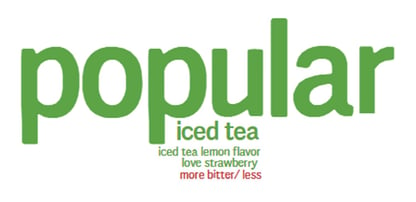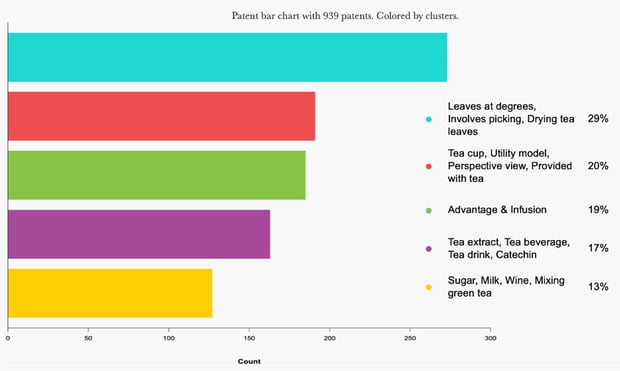Admin

There are many types of market research available to brands – and some are more effective than others. We’ve listed the top ten market research types and methods here to help you decide which is best for you!
First, let’s explore why social listening should be at the top of your ‘must do’ list. Here are some fascinating stats speaking to the importance of good market research:
Global revenue of the market research industry exceeded 73.4 billion U.S. dollars in 2019, growing two-fold since 2008. Having the right types of market research can be a deal-maker, or breaker. It reveals not only what your consumer wants, but who they are.
There are many types of market research out there, and they all reveal different things. Knowing which is right for your company’s marketing efforts is critical – and it may require a combo approach. Let’s explore some of the choices with our top ten countdown!
40% of marketers are using consumer research to make decisions, and it’s no wonder surveys are a top choice. Types of questions given can be open ended allowing the consumer freedom to offer unexpected insight. They can also be yes or no, multiple choice, rating scales, etc.
Because of the wide range of formats, surveys are very versatile and easy to manage, as long as you have a good mailing list or connect with a service that has one. However, if you don’t ask the right questions in the right way, you may get mixed results. And if you ask too many questions, respondents may experience fatigue and offer random answers just to finish. Having clear and concise questions is directly related to the quality of answers you’ll get.
This type of market research is like playing spy. It’s ideal for a retail setting where the researcher can observe the consumer in his/her natural shopping habitat. One can them compare notes on how their behavior changes over time. It can be a manual process supplemented by tracking the effect special discounts, product positioning and more have on their decision making.
Observing online fleshes this intel out further. For example, monitoring social media reveals this purchase trigger/barrier surrounding a popular tea company. It’s something that would not be revealed otherwise, in fact. Our word cloud reveals negative sentiment around the flavor.

Digging below the surface, we discover the person is a regular customer from the Middle East and s/he finds this brand to have a varying flavor depending on where in the world they purchase it from. The location mentioned in that post offers a product that is noticeably bitter and less sweet. This is important intel for any beverage brand to be aware of.
Using a social analytics tool can reveal this and other unexpected barriers within seconds,.
This type of market research is conducted in the consumer’s environment and is a more active form of consumer observation. It’s trying out new things and recording results to see which products resonate with your audience. The key is to trying out different variables to determine a cause and effect relationship. It’s laborious, but useful. And it can be particularly meaningful when you start with an informed understanding based on your social media listening and other information-gathering.
You’ll want to make sure your results can be replicated, as that’s the gold standard here. If your results are one-off chance happenings applicable only to a small consumer subset, they likely won’t translate well to your larger consumer group.
The concept is simple here: Put people in one room, ask questions, get answers. Your questions can be product-driven or more personal, seeking to capture consumer views on companies that support diversity efforts.
From the discussions, a brand may derive insight that forms a wider view of society – or at least of the segments of society that are interested in your brand! If done right, the natural themes that arise can send a brand in a new direction – sometimes one that they’ve been hesitant to take. You’ll want to watch for tangents however, as these can take away the main focus of the group, causing this market research train to derail.
There’s also the presence of others to take into consideration. Having too many people, or a less than skilled researcher facilitating, can skew the results. It’s important that the consumers do not feel pressured or coached to answer a certain way. And it’s also important to put them at easy, so they aren’t too nervous to answer in the first place.
A good interview is only as good as the person giving it. There really is an art to it. If you’re not careful about leading questions, or just have poorly thought-out ones, it can ruin the whole process. And this gives you results that can’t be counted on, wasting time and money.
That being said ,if you have someone who is fantastic at making people feel at home and pulling information from a consumer, then it can be a very helpful type of market research! When conducted properly, it’s a more personal exchange, allowing for communication and clarification, digging deeper and beyond surface responses.
Primary research is research comes directly from the horses mouth -and is a combination of many of the research types we shared above. Maybe it’s a focus group, survey or a one-on-one interview. Or perhaps you get out into the “field” such as conducting observations in-store, or creating experiments in different environments.
And then there are resources a plenty that have done the research for you! Today you can purchase subscriptions that help you get a handle on what’s happening in the world of commerce or what’s happening in the luxury brand industry, for example. Since they are already neatly organized, you save time; you just want to be sure they are from a source you trust.
A patents database can open your eyes to what is already on the market and what is in the making – and by whom. This can be really helpful when determining what is trending, what may be oversaturated in the market, and where to allocate your funds.
For example, if you’re in the tea business, it may be helpful to know that green tea seems to be trending – which makes sense as Matcha Lattes are all the rage right now. But you can look closer to see that filed under tea extract, there’s a masking agent in development to disguise the bitterness in green tea. This could be an interesting tidbit for other tea companies to be aware of!

As far as types of market research goes, sales data helps you zero in on what’s working currently for existing customers, as what they’re buying offers a pretty clear indication of what they want! It’s not complete, but it can still offer up some valuable intel on their buying habits and how it changes over time. And if you’re already tracking customer data, which you should be, then it’s cost effective and takes minimal time.
Now we come to the nitty gritty. What’s your competition up to? It’s a crucial aspect of market research to analyze your rivals and see how they stack up. You can apply all your benchmarking efforts to your competition and instantly see how they rate with pricing, quality, sustainability practices and much more. This gives you access to their strengths and weaknesses. And in the latter can lie opportunity, especially when it comes to their consumers. Maybe they are disgruntled, or perhaps your competition doesn’t offer something that you do. A competitive analysis can help pinpoint these things so you can expand your brand awareness – and your customer base.
Social listening is by far is the most effective type of market research. The rest just capture pieces and make assumptions, sometimes logical or illogical. Savvy brands can’t take that chance. They need results they can stake their brand existence on.
Our previously mentioned types of market research leave room for human error and facilitator bias. Social listening doesn’t, as it is pulled straight from the fingertips of consumers! Social media has reached a point where there is so much content being shared online, and consumers feel free to share it ,as their social platforms have become an extension of themselves. It’s a gold mine of intel that brands can use to solidify their marketing strategy. This is particularly critical when it comes to the consumer’s journey.
Nearly 90% of marketers, across all types of organizations, agree that understanding the consumer journey across channels and devices is critical to their success. By using a social listening tool, a company can identify the different triggers along each step of the purchase path, as well as discover emerging trends, track brand mentions, understand sentiment and keep a finger on the pulse of their brand health at all times. And that’s just scratching the surface.
The key drivers of market research are speed, cost and quality – with accuracy being highlighted here, as it eliminates unnecessary spending. Social listening provides all of this – and more.
If you’re ready to simplify your process, while extracting the most accurate results that market research can provide, reach out for a demo!